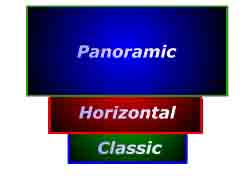|



|
After the war museums and art schools opened their doors to photography,
a trend that has continued to the present. Photographers began to
break free of the oppressive strictures of the straight aesthetic
and documentary modes of expression. As exemplified by Robert Frank
in his highly influential book-length photo-essay, The Americans
(1959), the new documentarians commenced probing what has been called
the “social landscape,” often mirroring in their images
the anxiety and alienation of urban life. Such introspection naturally
led to an increasingly personal form of documentary photography,
as in the works of J. H. Lartigue and Diane Arbus.
Many young photographers felt little inhibition against handwork,
collage, multiple images, and other forms that were anathema to
practitioners of the straight aesthetic. Since the 1960s photography
has become an increasingly dominant medium within the visual arts.
Many painters and printmakers, including Andy Warhol, Robert Rauschenberg,
and David Hockney have blended photography with other modes of expression,
including computer imaging in mixed media compositions at both large
and small scale. Contemporary photographers who use more traditional
methods to explore non-traditional subjects include Cindy Sherman
and Richard Prince.
The 1990s brought the first attempt to provide a fully integrated
photographic system. Aimed at the amateur photographer, the Advanced
Photo System (APS) was developed by an international consortium
of camera and film manufacturers. The keystone of the new system
is a magnetic coating that enables the camera, film, and photofinishing
equipment to communicate. The cameras are self-loading, can be switched
among three different formats (classic, or 4 by 6 in.; hi vision,
or 4 by 7 in.; and panoramic, or 4 by 11.5 in.), and are fully automatic
(auto-focus, auto-exposure—“point-and-shoot”). The
film is a new, smaller size (24 mm), has an improved polyester plastic
base, and two magnetic strips that record the exposure and framing
parameters for each picture and allow the user to add a brief notation
to each frame. The photofinishing equipment can read the magnetic
data on the film and adjust the developing of each negative to compensate
for the conditions. After processing, the negatives (still encased
in the cassette) are returned along with the photographs and an
index sheet of thumbnail-size contact prints from which reprints
and enlargements can be selected.
|

